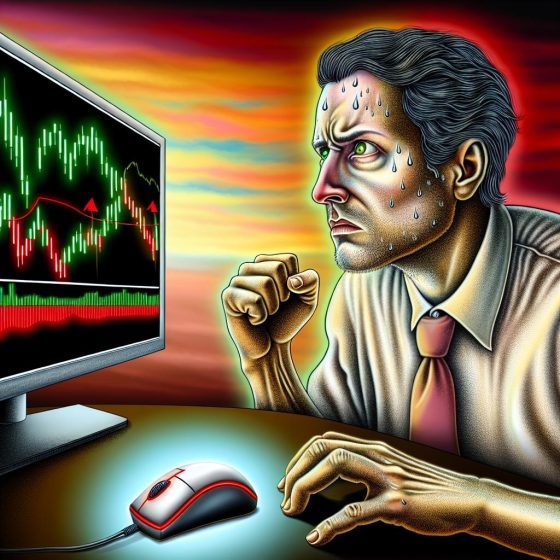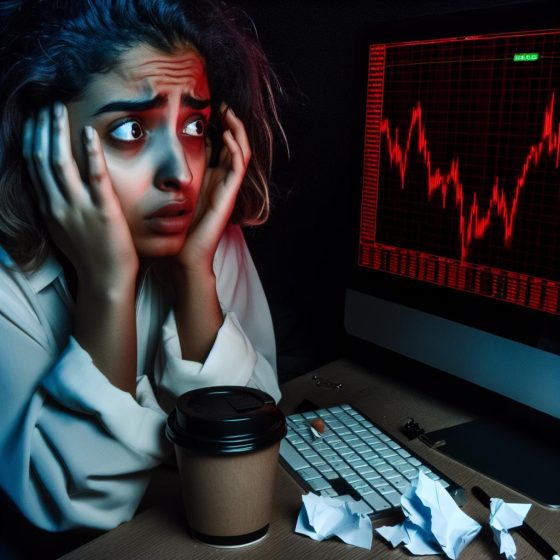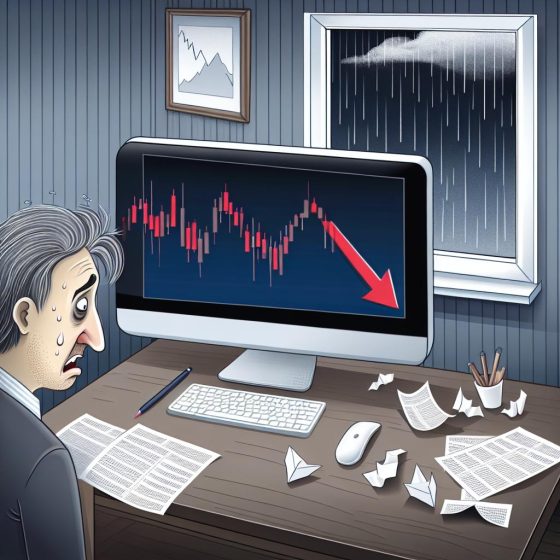The Most Painful Trading Mistake
Trading in the financial markets can be both exciting and lucrative. However, it is also fraught with risks, especially for those who are unprepared or overly confident. One of the most painful mistakes a trader can make is failing to use stop-loss orders. This article explores the implications of this error and why it should be avoided at all costs.
Understanding Stop-Loss Orders
A stop-loss order is a predetermined point at which a trader will exit a losing position. It is designed to limit potential losses by automatically selling a security once it reaches a certain price. This tool is fundamental in risk management, ensuring that traders do not become emotionally attached to their trades or lose more than they can afford. Let’s delve deeper into how stop-loss orders function and the core reasons they are integral to successful trading strategies.
A Basic Mechanism of Control: In the unpredictable environment of financial markets, a stop-loss order acts as a basic mechanism of control. By setting it at a certain price, traders establish a boundary that reflects their risk tolerance. It operates as a safety net to curtail potential losses and serves as an automatic response to unfavorable market changes.
Simplicity and Automation: An outstanding aspect of stop-loss orders is their simplicity and the automation they offer. Once a stop-loss is set, it requires no further action until the price of the security reaches the specified threshold. This automation alleviates the necessity for constant monitoring of the market, thus aiding traders who might not have the luxury of time to watch the markets perpetually.
The Consequences of Ignoring Stop-Loss Orders
Ignoring stop-loss orders can have severe financial consequences. Without a stop-loss in place, traders risk significant losses, especially in volatile markets. This can lead to a situation where a single trade wipes out a substantial portion of the trading account.
Financial Downfalls: The absence of stop-loss orders turns trading into a gamble. Traders leave their portfolios susceptible to erratic market movements without predefined exit strategies. The financial implications can be devastating, as even a seemingly small misstep can translate into a significant monetary setback.
Emotional Trading Spiral: Without stop-loss orders, traders are more prone to emotional decision-making. An ill-fated trade can induce panic, leading to a hope-driven approach where the bettor holds onto losing positions in anticipation of a market turnaround. Such a strategy, heavily reliant on hope over analysis, commonly exacerbates the problem, resulting in compounded losses.
The Psychological Impact
Besides financial implications, ignoring stop-loss orders can affect a trader’s psychological state. The stress and anxiety from mounting losses can be overwhelming. This emotional turmoil can impair judgment, leading to poor decision-making and a vicious cycle of losses. Analyzing the psychological aspects reveals deeper challenges.
Stress and Burnout: Continuous exposure to financial losses without safeguards leads to stress and potential burnout. Psychological stress from trading can influence other areas of life, manifesting in both mental and physical discomforts, thereby diminishing overall quality of life and professional discipline.
Confidence Erosion: Experiences of substantial loss often result in shattered confidence. Traders may question their skills, doubting their analytical abilities and strategic decisions. The recovery from such psychological damage can be prolonged and resistant, challenging even the most resilient individuals.
Lessons Learned
The key lesson from this painful mistake is the importance of discipline and adherence to a trading plan. Traders must establish rules and guidelines for their trades, including the use of stop-loss orders. Comprehensive risk management protocols safeguard financial health and maintain emotional stability in the unpredictable world of trading.
Discipline as a Core Value: Embedding discipline in all trading activities is critical. A trading plan serves as a structured approach that incorporates realistic and systematic safety measures, ensuring that traders remain aligned with their financial goals and risk tolerances.
Continuous Learning: The financial markets are dynamic; thus, continuous education is imperative for success. Educators recommend regular evaluations of trading strategies, revisiting both successful and unsuccessful trades to cultivate a robust learning agenda. This self-assessment process is crucial to refine techniques and enhance decision-making capabilities.
To further explore proper trading strategies and risk management techniques, consider visiting reputable financial education platforms and trading resources, such as Investopedia or BabyPips.
In conclusion, while trading offers opportunities for financial growth, it also demands a high level of discipline and strategy implementation. Ignoring these fundamentals, such as not utilizing stop-loss orders, can result in painful financial and emotional consequences. The discipline enforced by stop-loss strategies is not merely a protective measure but a vital aspect of a holistic trading strategy. Such diligence not only prevents catastrophic financial loss but also protects against the erosion of mental health and trading psyche, fostering sustainable growth and lifelong resilience in financial endeavors.









